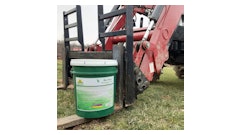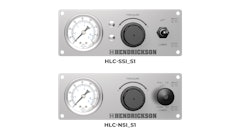Properly storing and dispensing lubricants will help to reduce environmental contamination, potential cross contamination and miss-application. Here are some tips to help make sure the lubricants are stored and used properly.
Lubricant storage
All bulk lubricant and coolant storage tanks should have the following features:
- Double walled
- Secondary containment in the event of storage tank damage or failure
- Drain valves for contamination removal
- Appropriate containment (based on local requirements)
- Containment should have drain valves for contamination removal
- Desiccant air breathers on all bulk tanks
- Sight gauges for determining fluid level
- Bulk tanks labeled with tank capacity, maximum fill point and gallons per inch (Correlate to Sight Gauge)
- Bulk storage tanks properly labeled with product NFPA class, brand name and viscosity grade. Engine oil storage should list the performance or API grade.
- All fill points should be locked
- In-line filtration on all bulk fluids
All totes, drums and kegs in use should be stored inside and stored horizontally. All drums and kegs stored outside should be undercover and stored horizontally. If they are stored upright, use drum/keg covers. All drums and kegs stored outside, not under cover must be blocked, with bungs at the 3 and 9 o’clock positions to help maintain seals.
All packaged products should be stored in a parts room. Adopting a first in/first out or similar inventory rotation method will help prevent accumulation of old product.
Lubricant dispensing
- All dispensing handles should be properly labeled with the product name and viscosity grade
- All overhead reels should have proper drip containment and secondary product labels
- Remove all funnels, open containers and pails from your facility. These promote contamination from dirt/dust and possible cross contamination via non-compatible fluids.
- Only utilize dedicated, sealed containers for fluid transfer and top-off
- All grease guns should be properly hung (horizontally) or stored in cabinets
- Properly clean grease dispensing nozzles before and after each use
- Properly clean grease fittings before servicing
Content provided by Shell Rotella

























